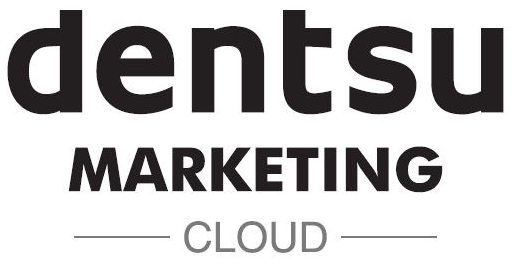Nostalgia is a universal experience that most of us have encountered—a wistful journey back to moments that seemed simpler or better. It’s a feeling sparked by a familiar song, an old photograph, or a movie we loved as children.
We’re witnessing a continued resurgence of nostalgic trends in 2024. Y2K fashion remains a dominant force, with low-rise jeans and butterfly clips making a strong comeback. On the big screen, the legacy of the 90s lives on with the return of iconic franchises like “The Matrix,” captivating both old fans and new audiences alike. In the music world, the viral success of the “Barbie” soundtrack has brought back the infectious energy of 90s pop, while the revival of classic 2000s hits on TikTok keeps younger generations grooving to the tunes that defined an era.
But what’s fueling this wave of nostalgia? Let’s understand why nostalgia marketing resonates with Gen Z and how brands can leverage it in their marketing strategies.
Why does nostalgia marketing resonate with Gen Z?
Though young, Gen Z has a strong appreciation for cultural references and trends from past decades. Here’s why nostalgia marketing is particularly effective with this generation:
Escape from Digital Overload: Even as digital natives, Gen Z values authenticity and meaningful experiences. Nostalgia offers a respite from the relentless flood of digital content by evoking familiar and comforting memories.
Emotional Connection: Nostalgia triggers positive emotions tied to past experiences, making brands that employ it feel more relatable and trustworthy to Gen Z consumers. According to Forbes, 73% of Gen Z feels a deep sense of nostalgia for the past, highlighting the emotional pull of nostalgia.
Desire for Authenticity: Gen Z places high importance on authenticity and sincerity. According to an article by Linkedin, 67% agree that “being true to their values and beliefs makes a person cool. By tapping into shared cultural experiences, nostalgia marketing helps brands convey a sense of genuineness that resonates deeply with this audience.
Strategies for Brands to Engage Their Gen Z Audience Through Nostalgia Marketing
Revisit Iconic Products and Campaigns: Repackaging classic products or recreating iconic marketing campaigns can evoke strong nostalgic feelings. For example, Coca-Cola resurrecting its classic glass bottles or using its advertising jingles to connect with consumers who grew up with the brand in India. UMEEDO WAALI DHOOP COKE AD.
Leverage Retro Aesthetics: Incorporating retro aesthetics, such as vintage fonts, color palettes, or fashion trends, can create a sense of time travel and evoke fond memories. Think of brands like Polaroid or Vespa, which have successfully capitalized on their retro appeal. A significant 74% of Gen Zers enjoy it when brands offer retro-inspired products or content.
Sharing Cultural Experiences: Sharing the history and heritage of a brand can create a sense of authenticity and nostalgia. By highlighting the brand’s journey and its role in shaping culture, marketers can connect with consumers on a deeper level. For example, Levi’s has successfully used its iconic “Levi’s Strauss & Co.” logo and vintage jeans to tell the story of its enduring legacy in American culture, connecting with consumers who appreciate the brand’s history and heritage.
Ads made specifically for Gen Z’s and Millennials: Nostalgia can be highly personalised, and targeting specific demographics can increase the effectiveness of the strategy. For instance, a brand targeting millennials might focus on pop culture references from the 90s or early 2000s. For example, PokemonGo was the “first mass-consumption nostalgia product” by the millennials according to the New York Times.
Create Interactive Experiences: Engage consumers by tapping into nostalgia with experiences. For example, you can now live in the limited edition Barbie dream house (made come to life by Airbnb). This example highlights how brands can deepen emotional connections and amplify the impact of nostalgia.

Let’s Look at Some More Examples of Successful Nostalgia Marketing Campaigns.
Spotify: In 2020, Spotify’s mobile app downloads increased by 21% in the first week of December thanks to the Spotify Wrapped feature. Showing nostalgia increases a brand’s recall.
Dunkin’ Donuts: 81% of young consumers said they like it when brands bring back products and trends from their childhood. Hence, Dunkin’ Donuts has capitalized on nostalgia by bringing back limited-time offers of classic menu items. This strategy has allowed the brand to connect with customers who have fond memories of enjoying these treats in the past.
Puma x Cartoon Network: By reintroducing classic characters and products, the co-promo between Puma and Cartoon Network’s “Dexter’s Laboratory” is a brilliant fusion of sports and 90s cartoon nostalgia. Check the MB.03 sneakers here.
Nintendo: The gaming company has successfully tapped into nostalgia marketing by re-releasing classic games and consoles, like the Super Nintendo Classic Edition. This strategy aligns with consumer preferences; a study by Kantar reveals that 52% of 12- to 29-year-olds favor classic brands over newer ones.
Keep It Real: How to Win Over Gen Z with Authentic Nostalgia
Brands can tap into this by creating a genuine connection that fosters community and belonging. The key is to keep it authentic—don’t overdo it, and make it personal. When done right, nostalgia marketing isn’t just a trend; it’s a powerful way to build loyalty, boost sales, and create a tight-knit community among your Gen Z audience.
Ready to leverage nostalgia marketing and connect with your Gen Z audience on a deeper level? Explore DMC Insights to understand their preferences and craft authentic, nostalgic campaigns. For more information, reach out to us at DMCsupport@dentsu.com




